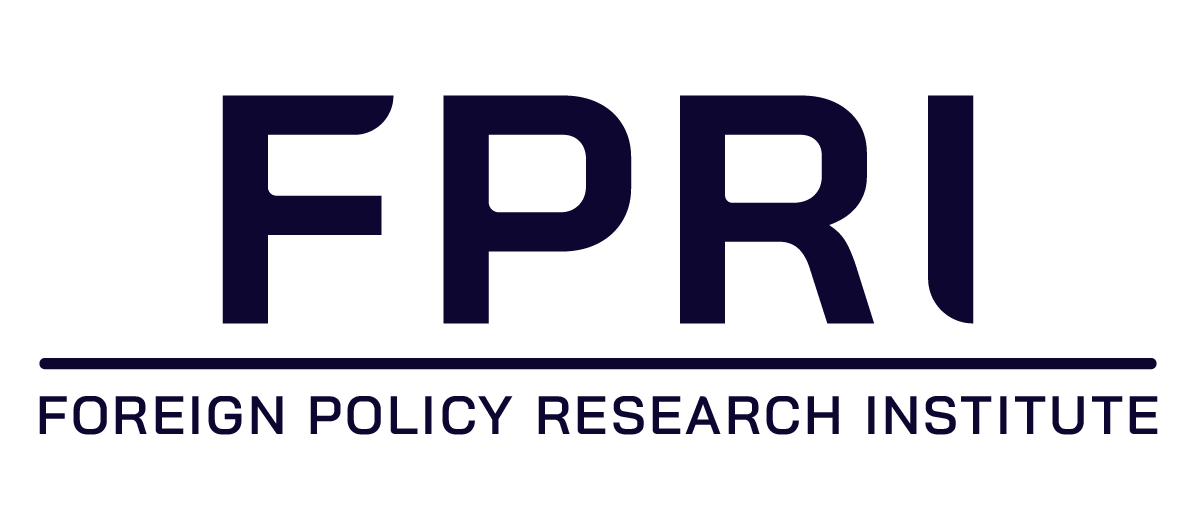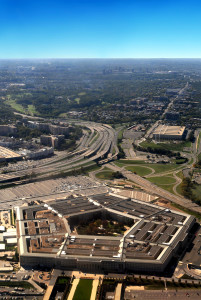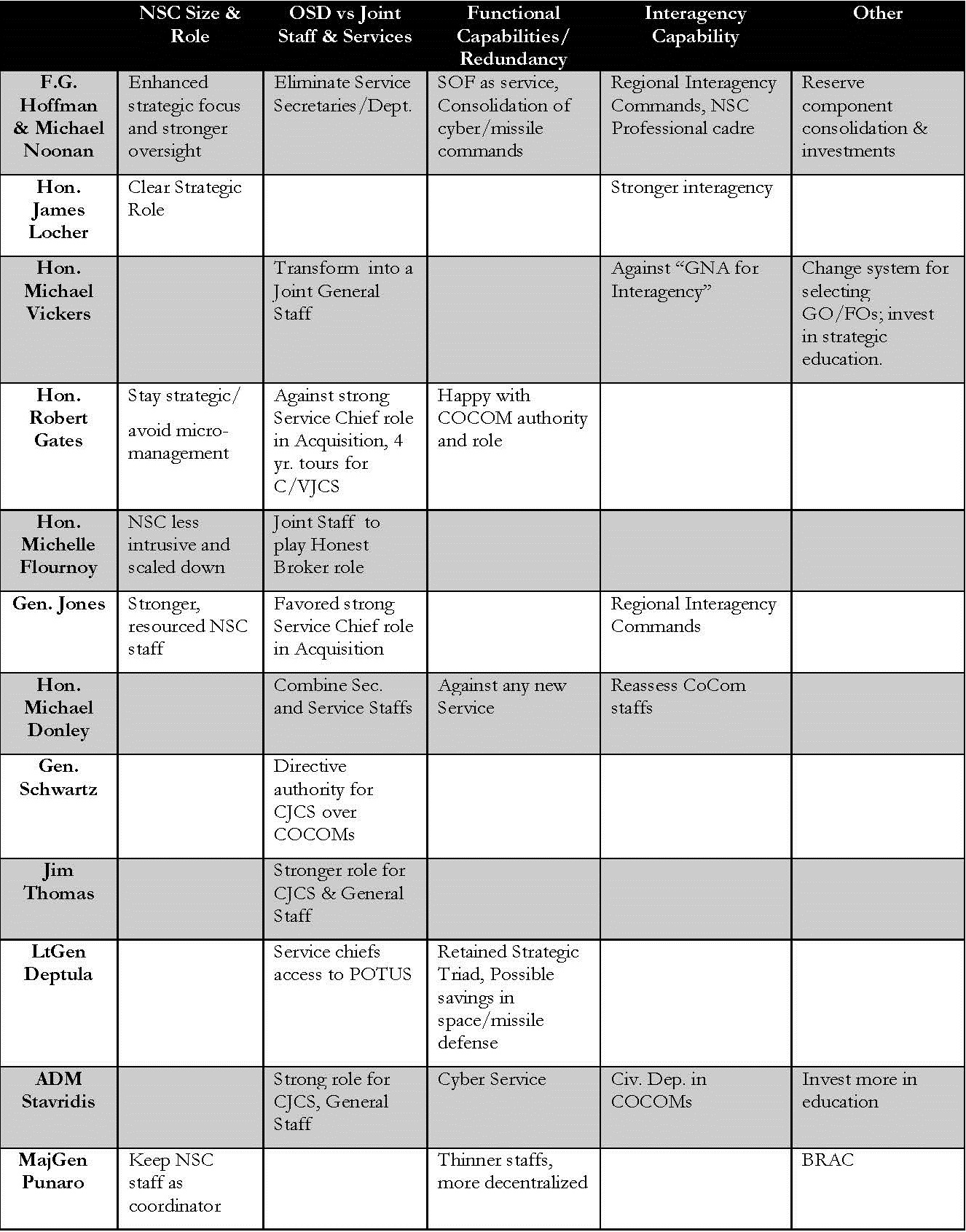A nation must think before it acts.
An array of new threats, disruptive technologies, years of mismanaged acquisition programs, and tight budget caps have combined to produce a looming gap in our collective defense. The Nation makes a significant investment, some $583 billion just for the Pentagon, greater than the Cold War-era in budget resources (in constant dollars to account for inflation). Yet, it does not appear to generate greater security thanks to rising powers, Putin’s aggression, jihadists in the Middle East, and our cyber insecurities. As Andrew Krepinevich of the Center for Strategy and Budgetary Assessment has noted on current U.S. defense policy:
…all other factors being equal, the decline in resources projected to be devoted to defense relative to those being invested by the revisionist powers suggest the United States is accumulating risk to its ability to preserve security interests at an alarming rate, one that even a well-designed strategy may be unable to offset.[1]
Senator John McCain (R-AZ), chairman of the Senate Armed Services Committee (SASC) has weighed in on the expanding defense strategy/resource gap by sponsoring an extensive series of hearings on defense reform rather than by trying to throw more money at the problem. These hearings have investigated several key elements of the country’s national security architecture, and have focused on gaining greater efficiencies. Given the charter of the SASC on our armed forces, the committee has focused almost exclusively on the military component of our national defense. While this may be where the greatest reforms can be gained, it is by no means a comprehensive examination of all that ails the development and implementation of U.S. national security strategy.
The Committee’s leadership is comparing its current agenda with the landmark defense legislation known as the Goldwater-Nichols Act (GNA) of 1986. While this bill produced numerous positive benefits over the last 30 years, even its drafters have noted that it contains shortfalls or has not lived up to all its expectations. Senator McCain properly highlighted the well-recognized benefits of the GNA, but admitted that the most significant limitation of the legislation’s success was in resource management (including in acquisition programs and requirements), joint warfighting priorities, and reducing redundancy in roles and missions. Thus, this bill may not be the best historical analogy.
A more fundamental restructuring may be warranted. The National Security Act of 1947 created the Department of Defense, defined the responsibilities of the Secretary of Defense, established the U.S. Air Force, and formalized the Joint Chiefs of Staff. Additionally, it gave legislative approval to the National Security Council and created the Central Intelligence Agency. These were significant structural changes that emanated from our World War II experiences.[2]
In a previous FPRI E-Note, we used the Key West conference run by then Secretary of Defense James Forrestal as our historical analogy. That post-World War II conference produced an executive agreement on roles and missions with real structural and mission changes that had major funding implications.[3] In comparison, the noteworthy Goldwater-Nichols bill had no direct impact on the force levels or budget of the Armed Services. Its focus was on the power dynamics between the Chairman and the Service Chiefs, and the Service Chiefs to the Combatant Commanders. It was a cultural shift in emphasis that rewarded jointness, incentivized officers to get joint staff/command time, and enhanced professional military education. These were all very positive elements that should not be overlooked or watered down. But the challenge today is not really about power relationships as much as outdated management layers, bloated bureaucracies, and far too little operating “tooth” left over after an ever growing infrastructure ”tail.”
As noted in Congressional testimony given by Arnold Punaro, a former HASC staff leader, retired Marine General, and industry executive, the United States is spending 30% more today (in constant dollars) than we spent at the peak of the Reagan buildup—but with a total combat force that is 40-50 percent smaller. The Pentagon’s conglomeration of four Services, 8 joint commands, and 14 defense agencies has produced a much larger aggregate overhead and infrastructure, with defense-wide spending going from 5% in the Reagan years of the budget to 20% of the budget today. The staffs alone from the Defense Department, Service Departments, the Joint Staff, Defense Agencies, and regional combatant commands total over 250,000 people. This is enough personnel to field 8 more divisions and crew five aircraft carriers. The combined annual budget for these are estimated at $113-120 billion. This exacerbates the gap between our desired capabilities of our national security strategy and allocated funding. In short, as Punaro put it, “We are not getting the defense capability we should for the dollars we spend and, if uncorrected, we will not have the military we need in the years ahead.”[4]
In addition to reducing the massive amount of counter-productive management structure, there is a need to adapt to the evolving character of conflict given the emergence of new forms of warfare. Senator McCain himself has raised this issue.
There are serious questions about how to properly prioritize new and untraditional missions. We cannot afford for these vital functions to be orphaned within services that will undercut and underfund them in favor of parochial priorities. Those new domains of warfare, such as space and cyber, should we even consider creating new services, much as the Air Force was created seven decades ago in recognition of the vital role of air power?[5]
His point about structure for vital roles in the 21st Century is an important one, and it underscores the precedent set by the Goldwater-Nichols Act (GNA). [6] The reference plays well to the SASC as it was the major player in that debate and it ultimately prevailed due to its prodigious staff work setting up that debate. The same level of patient staff work and impartial analysis will again be needed. But we think Senator McCain and his fellow committee members should realize that the scope of the challenge before them is going to require them to invest more time and political capital to adjust the fundamental structure, the roles and missions of the Services, and shares of the budget pie than was the case with GNA. Here again, the better analogy may be a National Security Act for the 21st Century.
In the remainder of this essay, we summarize the inputs of various experts and compare them to our earlier ideas. Overall, we are pleased to see that most of the issues we raised in our fictional JCS speech set for 2016 have been addressed. While there is little consensus, as Table 1 shows, there are numerous areas where clear action is warranted.
National Security Council (NSC) and Strategy
While the establishment of the NSC is set in law, the structure, processes and role of the staff there is left to the discretion of the President. Few reformers mentioned what to do about the NSC aside from ensuring it does not intrude into operational matters.[7] Those, like James Locher, who did speak about it encouraged the SASC to incorporate the strategic role of the NSC into their review of our national architecture, and to ensure that it remains focused at the level of national strategy and serves as a coordinator vice intrusive meddler. General Jones also described the need for sustaining an effective NSC Staff.[8]
We did not address this in our original E-Note, but subsequent research by one of us has found a need for a smaller staff at the NSC but one with a strong policy development and implementation oversight role.[9] In a world in which the U.S. finds itself in complex operations requiring the integrated use of all elements of national power, the NSC staff must have the capacity to assist the President in formulating strategy and in ensuring it is being carried out. This requires the National Security Advisor to be more than an implementer of “coordination” or serve as an “Honest Broker.”[10]
OSD and Joint Staff Roles
The most controversial element of our small article was the increased role seized by the Chairman in his capacity as the senior military advisor to the President and to Congress. In our fictitious scenario, the Nation’s inability to match goals and resources was producing a severe decline, thanks to the present air of polarization and political deadlock represented by budget sequestration. The Chairman felt obliged to resolve the deleterious impact this was having on the Nation’s defenses and forced a consensus among the Services, Special Operations Command (SOCOM), Cyber, and Reserve chiefs in order to maximize the resources allotted. We recognized that our scenario, with the Chairman presenting these proposals, challenged traditional norms of civilian control in this country.
In the ongoing hearings there are even bolder proposals for the Chairman’s role as the head of a General Staff. Jim Thomas, a former Pentagon policy official advocated such a shift.[11] Michael Vickers, former Undersecretary of Defense for Intelligence, also found merit in the notion. Others testified that the decision authority being advocated for resides with a properly advised Secretary of Defense. Former Secretary of Defense Robert M. Gates seemed satisfied with the existing power balance, and with the advice he had received from the Chairman.[12] One witness felt that the Chairman should have directive authority over the military, placing him in the chain of command.[13] The notion of a General Staff and a single unitary commander brings with it a lot of historical baggage, but more importantly it challenges longstanding values and norms about civilian control embedded in U.S. strategic culture.[14]
Surely, after 15 years of protracted conflict, there is a need to step back and explore lessons learned about strategic competency. The suggestion that the strategic inputs of the Chairman and Joint Staff in Iraq and Afghanistan are the principal shortfall emanating from these conflicts needs validation. It’s possible that a stronger Chairman, with a longer 4 year tour, aided by a truly professional cadre of Joint strategists, would have numerous positive benefits in the hyper-complexity of tomorrow. Senator McCain put his finger on this issue:
Ultimately, we must also ask whether the Defense Department is succeeding in its development and execution of strategy, policy, and plans. The Office of the Secretary of Defense, the service secretariats and service staffs, the Joint Staff, and the Combatant Commands are all bigger than ever. Has the quality of military advice to civilian leaders improved? In short, is the Department of Defense more successful at planning for war, waging war, and winning war?[15]
There were few calls that challenged the current standoff inside the Pentagon between the Office of the Secretary of Defense and the Joint Staff which retain redundant staff offices in manpower, intelligence, program analysis, legislative and public affairs, and regional desks. One former senior OSD policy official, Michelle Flournoy, noted that there were 4,000 personnel on the Chairman’s staff and a lot of redundancy. Moreover, she noted that bloated headquarters were cutting into decision agility and performance.[16] She also suggested that the Chairman could play a constructive role as an honest broker in resource priorities.
The SASC should definitely explore the roles of the Joint Staff relative to the Chairman’s job as advisor and his placement in the national command authority. The central issue appears to focus on whether the Chairman’s role is to assist the President and Secretary of Defense as the principal military advisor in the development of policy, or as a resource manager who prioritizes the various demands for military forces and de-conflicts competing demands.
Service Roles and Missions vs Joint Interdependence
Our 2013 paper suggested that the Services were insufficiently joint and that they retained capabilities that could be provided by other Services in wartime. We went so far as to suggest that the Marines could give up their fixed wing aviation, sometimes referred to as the Nation’s Third Air Force. Retired Air Force Lieutenant General Dave Deptula was the strongest advocate of this approach. “The services need to shed their historical predilection for self-sufficiency, or “owning” everything required to fight and win independently.” We should rely, as we have recently, with joint task force operations that create synergies from each Service’s core competencies. “A service trying to control everything is an unsustainable practice from a resource perspective, and yields sub-optimized, compromised capabilities.”[17]
We agree with Senator McCain, as we elected to consolidate Cyber Command and our cyber warfare capability inside the Air Force and we also made the Air Force responsible for all Space and missile defense activity as illustrative examples of the kinds of organizational changes that are needed. Like retired Admiral James Stavridis, former Supreme Allied Commander Europe, we thought that a Cyber Service could make more sense than today’s agency, joint command, and Service cyber units.[18]
We also reluctantly addressed the prohibitive modernization costs of the Nation’s nuclear deterrent force and the resiliency of our Triad of delivery mechanisms, cutting out ICBMs and reduced the scale of the submarine based force. In hearings to date, only General Deptula mentioned it in his statement, and ironically he recommended retention of the current triad without admitting to its prohibitive cost and the resultant degradation in other conventional forces that must occur to pay for sustaining our admittedly aging nuclear deterrent.
Pentagon Management Layers and Role Clarity
We recognized the significant growth in our administrative bureaucracy at the Pentagon. Instead of mandatory but blind cuts by quotas, or specified elimination of tasks and reports, we removed an entire layer of management by dis-establishing the three antiquated Departments of the Navy, Army and Air Force. We described them as relics of the 19th century and pre-Goldwater-Nichols days. This will cut as many as 5,000 positions and result in as much as a billion dollars per year in savings. Some tasks at the OSD or the Service level may have to absorb some of these people. Many positions with acquisition oversight can be preserved and subordinated to the Service Chief. One witness, a former Air Force Secretary recommended the consolidation of Military Department headquarters with the Service Headquarters which retains Civilian Secretaries for oversight.[19]
Few testimonies did anything to consolidate or eliminate headquarters, although Admiral Stavridis, formerly Commander of U.S. Southern Command, did propose merging that command with U.S. Northern Command for greater efficiency. He also discussed the merger of U.S. European Command and Africa Command. Rather than make specific recommendations of this type, General Deptula proposed a Roles and Mission Commission to advise Congress.[20] We treated SOCOM and NSA/Cyber Command as the equivalent of a Service and several experts testified on the pros and cons of establishing Special Operations, Cyber and Space forces as Services instead of Joint Commands.[21]
If Congress was completely serious about overhead savings and eliminating wasteful spending it would authorize the Pentagon to explore base closure and realignments. Few proposals mentioned melting down that bureaucratic iceberg, although General Punaro urged that another round of base closures be considered.[22] They are not a panacea and they raise political costs to those in Congress whose constituencies are impacted. Our principal objective is to reduce the management overhead of the Pentagon, which magnifies resources constraints and produces a smaller fighting force. Few observers, with the exception of former Undersecretary of Defense for Policy Michelle Flournoy and Arnold Punaro, emphasized this problem.
Other Reforms
One area not yet covered are the roles and structures of the federal reserves and National Guard. We recognized the need to incorporate a Total Force perspective in our initiative. Over the past decade, the Reserve Component has simultaneously evolved into both an operational reserve for overseas contingencies and become a critical element of our homeland security. Aside from increased overhead structure at the Nation’s capital for the National Guard Bureau, there has been little done about matching resourcing to increased expectations. We proposed increased drill pay and time for the Guard to increase its readiness, as well as created savings to invest in new armories and modern training ranges. (Of course this will in and of itself require a new social contract with reservists in order to attract and retain the right personnel.) We also considered consolidating Reserve and National Guard structures which we believe would reduce “tail” and provide more “teeth.”
Several years ago the future of the Guard and Reserves was the subject of an excellent commission report. That commission noted a need for “fundamental reforms to reserve component’s homeland roles and missions, personnel management systems, equipping and training policies, and the organizations and structures used to manage the reserves.”[23]
To date none of the testimony received has touched upon the nearly 1,000,000 uniformed citizens who comprise the Reserve Component.[24] A recent Army Force Structure commission includes numerous proposals to enhance a Total Force approach to the Army and argued for increased active/reserve integrated units to enhance readiness.[25] These reforms merit Congressional attention and support.
Finally, we would also like to see more attention paid to education and not just the education of military officers. As Emma Sky, a British diplomat and political advisor to U.S. generals, observed, “We also need senior military leaders who are better able to explain to their civilian masters the limitations of military force and its utility. We have many tactical generals; we need more strategic generals.”[26] Both civilian and military officials, particularly Eliot Cohen of Johns Hopkins University’s SAIS and Admiral Stavridis, testified on this point.[27] More attention to interagency education and processes is needed too, but these are beyond the scope of the SASC’s charter, and will have to be addressed later. [28]
Ironically, advocates of a professional strategy community have sought to build that capability solely within the Chairman’s staff, and denigrated reforms for greater interagency contributions.[29] This would maximize purely military insights in a world we feel is in need of more multi-disciplinary and multi-domain solutions, as suggested by several experts.[30] The larger true problem was best articulated by Michelle Flournoy:
To put it bluntly, we’re trying to face 21st century threats with national security processes and tools that were designed for the Cold War — and with a bureaucracy that sometimes seems to have been designed for the Byzantine Empire….We’re still too often rigid when we need to be flexible, clumsy when we need to be agile, slow when we need to be fast, focused on individual agency equities when we need to be focused on the broader whole of government mission.[31]
Conclusion
Our current security posture is more precarious than the past. Our strategy hinges on sustaining deterrence and being prepared for a wider set of contingencies with smaller forces and without the same degree of military dominance we have enjoyed in the past, and an openly admitted declining margin of technological superiority.[32] Sequestration is part of that problem, but not the whole story. We are spending a declining revenue stream on overhead and “tail” at the expense of true fighting capacity. As one retired General noted, “A dollar spent on duplicative capability comes at the expense of essential capacity or capability elsewhere. Outdated service roles and missions parameters yield costly, inefficient acquisition programs.”[33] No successful organization can keep up that pattern for long.
Fortunately, under the leadership of Senator McCain, the SASC has embarked on a serious review of the design principles of our national security framework. He and his Ranking Member Senator Jack Reid (D-RI) have appropriately identified “Providing for a More Efficient Defense Management” as the Committee’s first principle.”[34] The accretion of layers, barriers, redundancies, and constraints we have imposed upon ourselves needs a fundamental reassessment and substantive reform. While the system can be effective, it certainly is not efficient. At a time when we lack the ability to maintain a balanced Joint warfighting force, this is not a time for half steps. Rather it is time for careful analysis and urgent progress.
—————————–
[1] Andrew Krepinevich, statement, Senate Armed Services Committee, October 28, 2015.
[2] For the background of this act see Amy Zegart, Flawed by Design, The Evolution of the CIA, JSC and NSC, Stanford, CA: Stanford University Press, 1999.
[3] F. G. Hoffman and Michael P. Noonan, “Defense Reorganization Under Sequestration,” FPRI E-Note, July 2013.
[4] Major General Arnold L. Punaro, USMCR (ret.), Statement, “ The Urgent Need to Reform and Reduce DoD’s Overhead and Infrastructure,” before the SASC, November 17, 2015, p. 7.
[5] Senator John McCain, Opening Statement on Roles and Missions of the Armed Service, November 5, 2015, accessed at https://www.mccain.senate.gov/public/index.cfm/floor-statements?ID=38c98e70-dba9-4e53-a32d-153459d08084.
[6] The definitive history of this significant legislation is James R. Locher, III Victory on the Potomac, The Goldwater-Nichols Act Unifies the Pentagon, College Station: Texas A&M University Press, 2002.
[7] James Locher, statement before the Senate Armed Services Committee, Nov. 10, 2015; F. G. Hoffman and Ryan Neuhard, “Avoiding Inertia, Reforming the NSC,” Orbis Spring 2016, forthcoming.
[8] Locher, p. 3; Gen. James Jones, Statement before the Senate Armed Services Committee, Dec. 3, 2015, pp. 13–14.
[9] Hoffman and Neuhard.
[10] Colin Dueck, “Strategic Defeatism,” FPRI E-Note, December 30, 2015.
[11] Jim Thomas, Statement before the Senate Armed Services Committee, Nov. 10, 2015.
[12] Dr. Robert Gates, Statement before the Senate Armed Services Committee, Oct. 22, 2015.
[13] General Norton A. Schwartz, USAF (ret.) Statement before the SASC, Dec. 10, 2015.
[14] John Lehman, “Is the Joint Staff a General Staff?,” Armed Forces Journal, August 1995.
[15] John McCain, “Time to Upgrade the Department of Defense,” War on the Rocks, Nov. 10, 2015.
[16] Mrs. Michelle Flournoy, Statement before the Senate Armed Services Committee, Dec. 8, 2015, pp. 2, 5.
[17] David Deptula, Revisiting the Roles and Missions of the Armed Forces, testimony before the Senate Armed Services Committee, November 5, 2015, p. 5.
[18] James Stavridis, “Why the nation needs a US Cyber Force,” Boston Globe, September 29, 2013; James Stavridis and David Weinstein, “Time for a U.S. Cyber Force,” Naval Institute Proceedings, January 2014.
[19] Michael Donley, Statement before the SASC, Dec. 3, 2015, pp. 8–10.
[20] Deptula, p. 12.
[21] Robert Martinage, Statement before the SASC on Revisiting Roles and Missions of the Armed Forces, Nov. 5, 2015, pp. 2–8.
[22] Punaro, Statement before the SASC, November 17, 2015. Ms Flournoy also noted that there was excess base structure, citing General Punaro’s data.
[23] Arnold Punaro, The Commission on the National Guard and Reserves, Washington, DC, January 31, 2008.
[24] The exception being Deptula, p. 21.
[25] The National Commission on the Future of the Army, Report to the President and Congress of the United States, Washington, DC, January 28, 2016. The report can be accessed at https://www.ncfa.ncr.gov/.
[26] Emma Sky, “What Lessons Should We Take from the Iraq War,” Army, December 14th, 2015, accessed at https://www.armymagazine.org/2015/12/14/what-lessons-should-we-take-from-the-iraq-war/
[27] Dr. Eliot Cohen, Statement before the Senate Armed Services Committee, October 22, 2015; James Stavridis and Harlan Ullman, “Needed: A Revolution in Military Education,” Defense News, December 15, 2015, accessed at https://www.defensenews.com/story/defense/commentary/2015/12/15/commentary-needed-revolution-us-military-education/77053404/
[28] Chris Kolenda, “Trapped, the Seven Habits of Underperforming U.S. Military Services,” ForeignPolicy.com, September 23, 2015. Accessed at https://foreignpolicy.com/2015/09/23/trapped-the-seven-habits-of-underperforming-u-s-military-services/
[29] Dr. Mike Vickers, Statement before the Senate Armed Services Committee, Dec. 8, 2015.
[30] Adm. James Stavridis, USN (Ret), Statement before the SASC, Dec. 10, 2015. See also his article “Incoming: A Handful of Heretical Thoughts,” Signal, December 1, 2015, accessed at https://www.afcea.org/content/?q=Article-incoming-handful-heretical-thoughts
[31] Michelle Flournoy, quoted by Dr. Christopher Lamb, Testimony before the Senate Armed Services Committee, Dec. 10. 2015, p. 25.
[32] Eric Higinbotham and Jacob Heim, “Deterring Without Dominance, Discouraging Chinese Adventurism Under Austerity,” The Washington Quarterly, Vol. 38, no. 1 (Spring 2015) pp. 185–199.
[33] Deptula, p. 1.
[34] Sen. John McCain, Opening Statement on Goldwater-Nichols Reform, Nov. 10, 2015.




